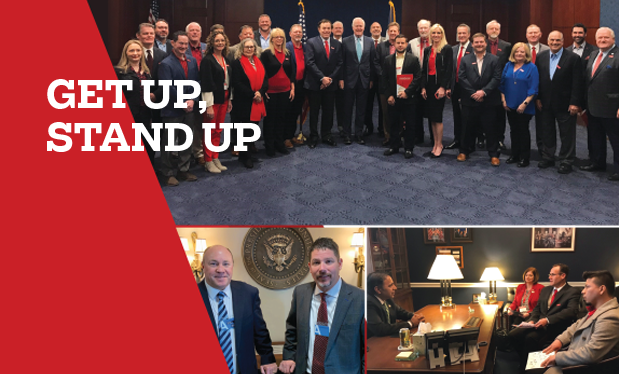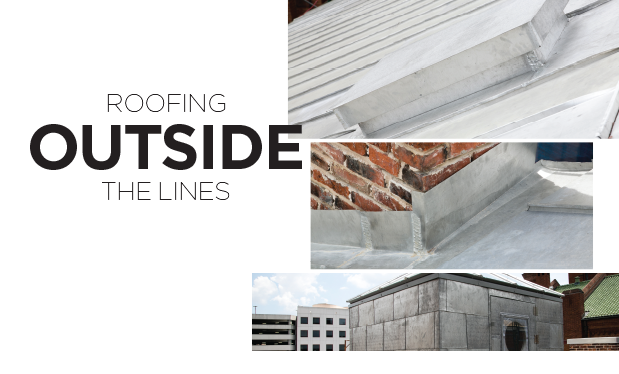During the past year, several significant regulatory actions by the Occupational Safety and Health Administration have changed the workplace landscape. In a political atmosphere where regulatory action was expected to be minimized, the effects of two particular revisions have caused their share of employer angst.
OSHA's recent revisions have been highly visible and reported on in depth by numerous outlets, but the following critical matters affecting your business have not received much-deserved attention.
OSHA
Two significant OSHA revisions involve cranes and record keeping.
Cranes
OSHA published its proposed crane standard in October 2008 with two aspects of the rule finalized in late 2018.
The two critical aspects outstanding until 2018 were crane operator certification by type or by type and capacity and the employer evaluation requirements under the rule. OSHA repeatedly delayed the effective date of the crane operator certification requirement in the rule because the regulatory language mandated certification by equipment type and capacity. This was an enormous problem because the largest provider of crane operator training did not offer certifications based on crane capacity but on crane type (boom truck, mobile hydraulic, tower, etc.). This implied once the rule had taken effect, potentially thousands of operator certifications would become noncompliant under the rule.
The issue was solved by revising the regulatory language to allow for certification based on "type or type and capacity." The agency action was welcomed by industries. However, OSHA only provided one-month notice to comply with the change.
The second issue involves the affirmative duty now embodied in the regulation language that an employer must evaluate every operator for the skills, knowledge and ability to operate equipment safely for the assigned work regardless of certification. Employers must develop written documentation of evaluations and the documentation must be available at the respective work sites. This provision took effect in February.
Record keeping
OSHA's record-keeping regulations are found in 29 CFR §1904. Part of the rules requires employers with 11 or more employees to keep records of employees' work-related injuries and illnesses. One of the required records under the rules is OSHA Form 300A, "Summary of Work-Related Injuries and Illnesses." Form 300A should be completed by an employer at the end of each year and must be posted in a visible location in the workplace from no later than Feb. 1 through April 30 of the subsequent year.
In November 2013, OSHA published a proposed rule to require certain employers to electronically submit annual data from their OSHA Form 300A. This included roofing contractors with 20 or more employees. Employers in any industry with 250 or more employees had to electronically report not only their OSHA Form 300A data but also data from OSHA Form 300, "Log of Work-Related Injuries and Illnesses," and OSHA Form 301, "Injury and Illness Incident Report."
OSHA originally intended to house this data on a publicly accessible portion of its website, www.osha.gov, under the premise that open access to the information would "improve workplace safety and health." Among several concerns NRCA expressed at the time of the original proposal was worker privacy as a result of the new electronic reporting requirements and public database; however, the agency summarily dismissed the concern.
Subsequently, stakeholder resistance to the rule in the form of lawsuits against the agency (particularly with respect to the significant information upload the new rule would have required along with numerous other significant issues) caused the agency to rework the rule. OSHA proposed revisions to the original rule that eliminated the requirement for employers with 250 or more employees to submit OSHA Forms 300 and 301.
The agency then cited concern for worker privacy with regards to the publication of sensitive data on the forms. Any positive effects on worker safety and health as a result of the publication of employee data on the forms is undetermined. The revisions also included a provision that employers required to electronically report data from OSHA Form 300A also must now submit their Federal Employer Identification Numbers. These revisions took effect in February.
Other activity
Additionally, the following updates can affect roofing workplace safety and are worthy of your attention.
Penalty adjustments
In January, the Department of Labor published annual adjustments for inflation to civil monetary penalties OSHA may assess for violations of occupational safety and health regulations. The adjustments are authorized regularly by the Federal Civil Penalties Inflation Adjustment Act of 1990 and took effect Jan. 23. The new penalty amounts follow:
- A willful violation may not be less than $9,472 nor exceed $132,598.
- A repeat violation may not exceed $132,598.
- Serious, other-than-serious, failure to correct and posting requirement violations each may not exceed $13,260.
Citations
In related enforcement data, citations by federal OSHA compliance officers against companies classified as roofing contractors decreased from 8,997 during the period from October 2016 to September 2017 to 7,311 during the period from October 2017 to September 2018. Total job-site inspections decreased in the same time frame from 3,824 to 3,079 with total final penalties dropping from $28,789,846 to $22,986,598. The data reflect a nearly 20 percent decrease in each of the three categories.
Additionally, total citations assessed against construction industry employers were 29,264 during the period between October 2017 and September 2018. The citations were the result of 11,781 inspections and resulted in $86,552,399 in penalties.
Based on these statistics from OSHA's most recent fiscal year, the roofing industry accounted for about 25% of all OSHA inspections, citations and penalty amounts in the construction industry. More than 75% of the penalties assessed against roofing contractors involved the duty to have fall protection, ladder use or fall-protection training. Falls continue to be the leading cause of roofing worker fatalities, so OSHA enforcement efforts are targeted to fall hazards in the industry.
It is important to note roofing industry fall fatalities accounted for nearly 23% of all fatal falls in the construction industry according to the most recent Bureau of Labor Statistics data.
Silica
During the period from Oct. 1, 2017, through Sept. 30, 2018, companies in the construction industry saw a significant increase in OSHA enforcement activity based on the construction regulation dealing with exposures to respirable crystalline silica. This period represents a full year of enforcement activity because the effective date of the rule was delayed until Sept. 23, 2017.
During that period, the regulation was the twelfth most frequently cited regulation by OSHA during inspections involving companies in the construction classification of industries. Federal OSHA compliance officers issued 543 citations after 197 workplace inspections for total final penalties of $727,968.
The good news for the roofing industry, and particularly roofing workers, is NRCA's objective data collection generally reflects most roofing tasks do not involve respirable crystalline silica exposures near the action level and nowhere near the permissible exposure limit. Sampling continues by NRCA staff with the assistance of NRCA member contractors to build a database of respirable crystalline silica exposure during roofing tasks. The silica resource portion of NRCA's website includes a decision tree to assist members with determining appropriate compliance efforts with the respirable crystalline silica rule.
Additionally, NRCA staff is in the process of sampling equipment that may reduce exposures to respirable crystalline silica from cutting concrete and clay roofing tile through the use of dust collection versus water delivery. Further details about these efforts will be published soon.
Stay focused on safety
If the past year reflects anything, it is that even what appears or is promoted as a minor regulatory revision can have substantial effects on the daily operations of a roofing company. The value to you, your employees and your company to continue to focus on minimizing and eliminating fall hazards and implementing controls for fall hazards that cannot be eliminated cannot be overestimated. Roofing fatalities from falls decreased slightly during the previous year, but the industry still has much to do to improve the work environment.
Harry Dietz is an NRCA director of enterprise risk management.



